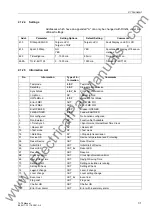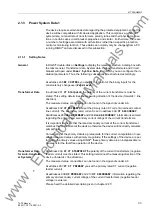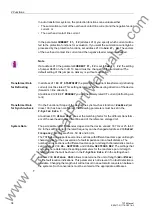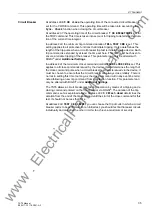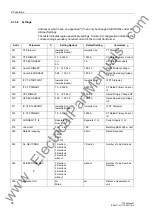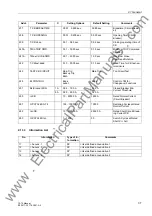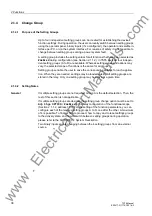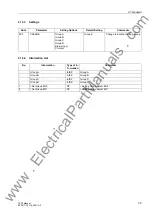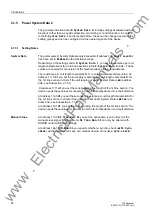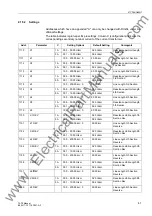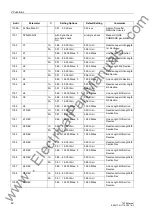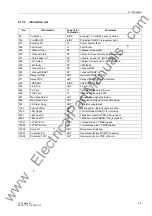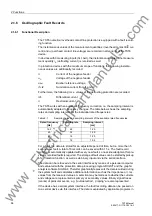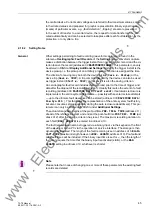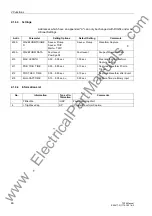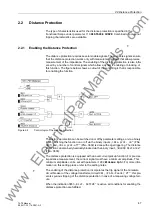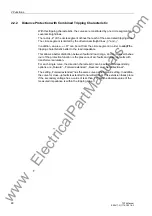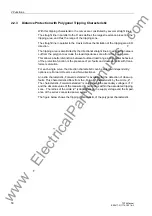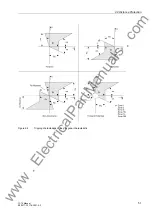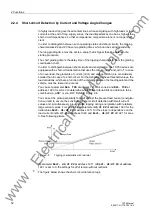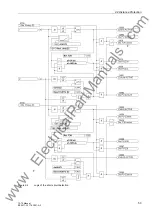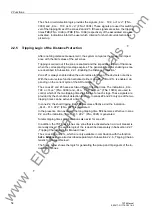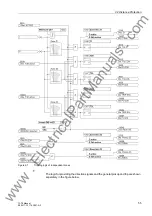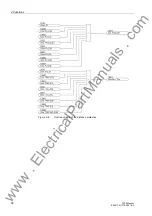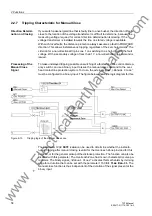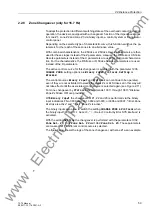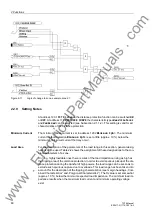
2.1 General
45
7ST6 Manual
E50417-G1176-C251-A3
the central device. Currents and voltages are referred to their maximum values, scaled
to their rated values and prepared for graphic representation. Binary signal traces
(marks) of particular events, e.g. „fault detection“, „tripping“ are also represented.
In the event of transfer to a central device, the request for data transfer can be exe-
cuted automatically and can be selected to take place after each fault detection by the
protection, or only after a trip.
2.1.6.2
Setting Notes
General
Other settings pertaining to fault recording (waveform capture) are found in the
submenu
Oscillographic Fault Records
of the
Settings
menu. Waveform capture
makes a distinction between the trigger instant for an oscillographic record and the cri-
terion to save the record (address
402
WAVEFORMTRIGGER
). This parameter can only
be altered in DIGSI at
Display Additional Settings
. Normally the trigger instant is the
device pickup, i.e. the pickup of an arbitrary protective function is assigned the time.
The criterion for saving may be both the device pickup (
Save w. Pickup
) or the
device trip (
Save w. TRIP
). A trip command issued by the device can also be used
as trigger instant (
Start w. TRIP
); in this case it is also the saving criterion.
An oscillographic fault record includes data recorded prior to the time of trigger, and
data after the dropout of the recording criterion. Usually this is also the extent of a fault
recording (address
403
WAVEFORM DATA
=
Fault event
). If automatic reclosure is
implemented, the entire system disturbance — possibly with several reclose attempts
— up to the ultimate fault clearance can be stored (address
403
WAVEFORM DATA
=
Pow.Sys.Flt.
). This facilitates the representation of the entire system fault history,
but also consumes storage capacity during the auto reclosure dead time(s). This pa-
rameter can only be altered with DIGSI under
Additional Settings
.
The actual storage time begins at the pre-fault time
PRE. TRIG. TIME
(address
411
)
ahead of the reference instant, and ends at the post-fault time
POST REC. TIME
(ad-
dress
412
) after the storage criterion has reset. The maximum recording duration to
each fault (
MAX. LENGTH
) is entered in address
410
.
The fault recording can also be triggered via a binary input, via the keypad on the front
of the device or with a PC via the operation or service interface. The storage is then
dynamically triggered. The length of the fault recording is set in address
415
BinIn
CAPT.TIME
(maximum length however is
MAX. LENGTH
, address
410
). Pre-fault and
post-fault times will be included. If the binary input time is set for
∞
, then the length of
the record equals the time that the binary input is activated (static), or the
MAX.
LENGTH
setting in address
410
, whichever is shorter.
Note
Please note that in case of changing one or more of these parameters the existing fault
records are deleted.
www
. ElectricalPartManuals
. com

